After ten secretive years, several hundred million dollars spent, and the efforts of hundreds of scientists and engineers, QuantumScape went public on a video call today with the performance results of its solid-state battery — and its potential impact on the electric vehicle industry.
In a world of breakthrough battery performance claims — QuantumScape seems closest to actually building better batteries.
The company’s “anode-less” design and ceramic separator create a battery where an anode of metallic lithium is formed in situ when the finished cell is charged.
“The best battery scientists have tested our batteries in their labs — and we’re releasing test results for the first time,” said CEO Jagdeep Singh.
Just-released performance data
Here’s some of the just-released performance data:
Test conditions: The tested cells were single-layer pouch cells with zero excess lithium on the anode and thick cathodes — running at rates of 1C charge and 1C discharge at 30 degrees Celsius.
Fast charge: Performance testing show QuantumScape’s ceramic separators working at high rates of power that allow a 15-minute charge to 80% capacity. That’s beyond what any type of EV battery is capable of delivering — conventional or solid-state. Because there’s no dendrite formation, there’s no need to throttle back on charging.
CEO Jagdeep Singh claims its lithium-metal battery has an energy density exceeding 400 watt-hours per kilogram, saying, “If you don’t use lithium metal at the anode — you can’t get energy density high enough.”
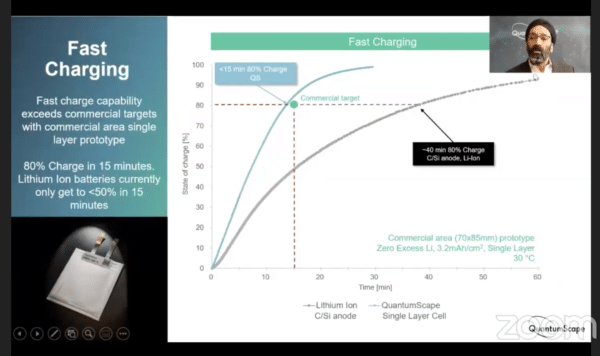
Zero excess lithium: The solid-state design eliminates the carbon or carbon/silicon anode and increases energy density because it uses no excess lithium on the anode.
Long life: According to the company, the firm’s battery technology is capable of running for over 800 cycles with greater than 80% capacity retention and is claimed to be “designed to last for hundreds of thousands of miles of driving.”
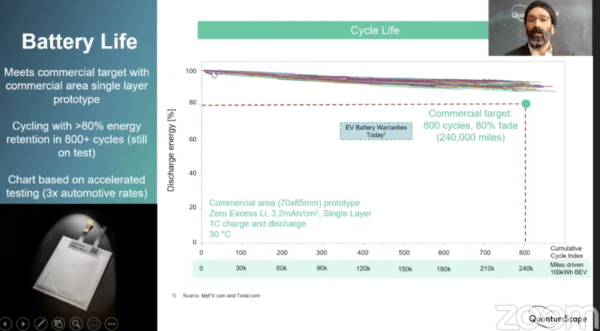
Low-temperature operation: The flexible ceramic separator operates down to -30 degrees Celsius, temperatures that make other battery designs fail — or require heaters.
Safety: QuantumScape’s solid-state separator is noncombustible and isolates the anode from the cathode even at high temperatures.
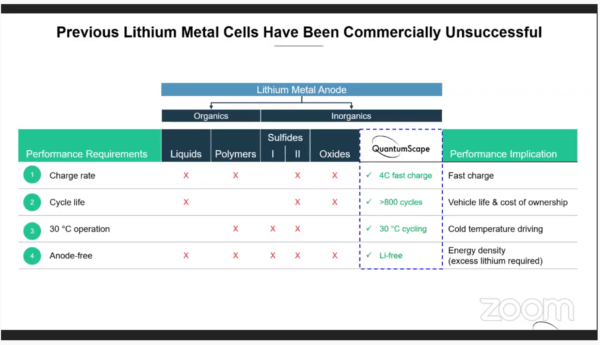
Rockstar battery experts, a “new roadmap”
While the panel of rockstar battery experts maintained a healthy skepticism about battery breakthroughs (and even cited that Edison quote), the battery mavens did seem impressed by the QuantumScape numbers.
Dr. Stan Whittingham, co-inventor of the lithium-ion battery and winner of the 2019 Nobel prize in chemistry, cited Edison and noted that the original lithium battery, built half a century ago at Exxon, was metallic lithium. He said energy density continues to increase but is limited by the graphite anode which takes up half the space in a conventional battery design.
He said, “There’s more hype in the literature than meat” but QuantumScape’s results looked like real progress — “Increasing energy density by 50% to 100% is a real breakthrough.”
“The hardest part about making a working solid-state battery is the need to simultaneously meet the requirements of high energy density (1,000 Wh/L), fast charge (i.e., high current density), long cycle life (greater than 800 cycles), and wide temperature-range operation.”
Venkat Viswanathan, consultant to QuantumScape and professor of materials science at Carnegie-Mellon University, said he was “fascinated” by the fast charge result. “This data shows the capability to charge to 80% capacity in 15 minutes, corresponding to an astonishingly high rate of lithium deposition of up to a micron per minute.”
While plating is the problem in graphite — it is the mechanism by which a lithium metal battery works.
“This re-imagines what fast charging really means and opens up new frontiers on what we mean by fast charging. These results blow away what was previously thought to be possible in a solid-state battery.”
JB Straubel, a member of QuantumScape’s board and Tesla cofounder, noted that progress in conventional lithium ion has been blocked by anode structure. Although it’s been optimized for graphite, improvements in the current technology are “approaching asymptotic.”
“Jumping to 50% improvements in energy density is game changing. Those type of energy density, power density and charge rate improvements unlock lots of new applications. Electric aviation looks more viable when you have this kind of energy density and power.”
“It creates a new roadmap,” said Straubel.
Getting the other 98% of vehicles to go electric
CEO Jagdeep Singh noted that only 2% of vehicles are electric and that’s because of battery energy density, charge times and cost. A battery that can address these limitations can get to that remaining 98%.
Singh said “Lithium-ion provided an important stepping stone to power the first generation of EVs. We believe…lithium-metal solid-state battery technology opens the automotive industry up to the next generation battery and creates a foundation for the transition to a more fully electrified automotive fleet.”
QuantumScape went public via a reverse merger with Kensington Capital last month. The ten-year-old startup is backed with $1.5 billion from Volkswagen, Breakthrough Energy Ventures, Khosla Ventures, Kleiner Perkins, Continental AG, Fidelity Management & Research, Prelude Ventures, Lightspeed Venture Partners and Capricorn Investment Group.
Volkswagen has been working with QuantumScape since 2012 and been in a joint venture to enable industrial-level production of solid-state batteries, starting in 2024. It’s a testament to the difficulty of developing a new battery technology that it has taken more than a decade to bring this product to the edge of industrial production.
Singh said, “We don’t have production cells yet,” but,”This technology is ready for commercial deployment as soon as we can scale up.”
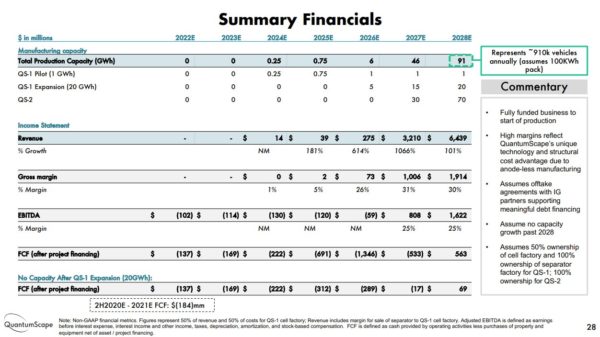
This content is protected by copyright and may not be reused. If you want to cooperate with us and would like to reuse some of our content, please contact: editors@pv-magazine.com.
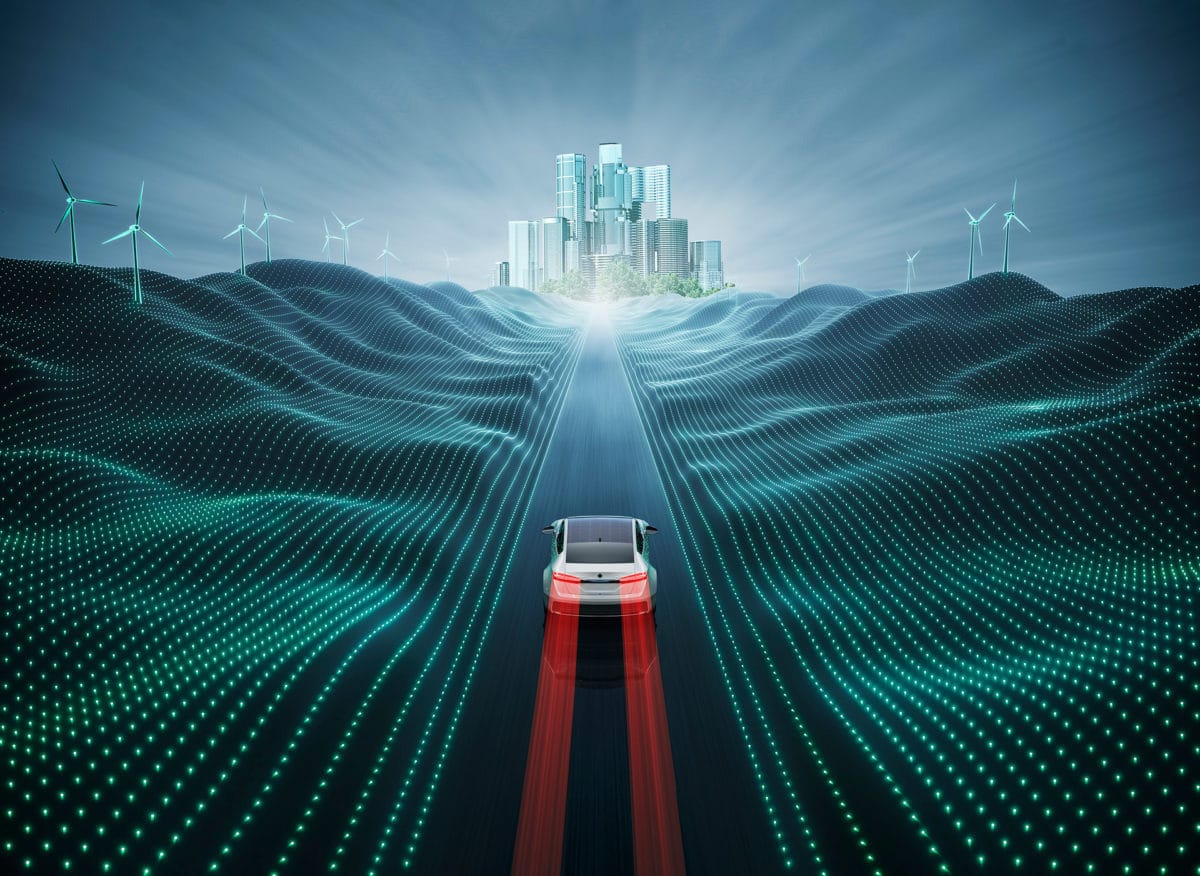
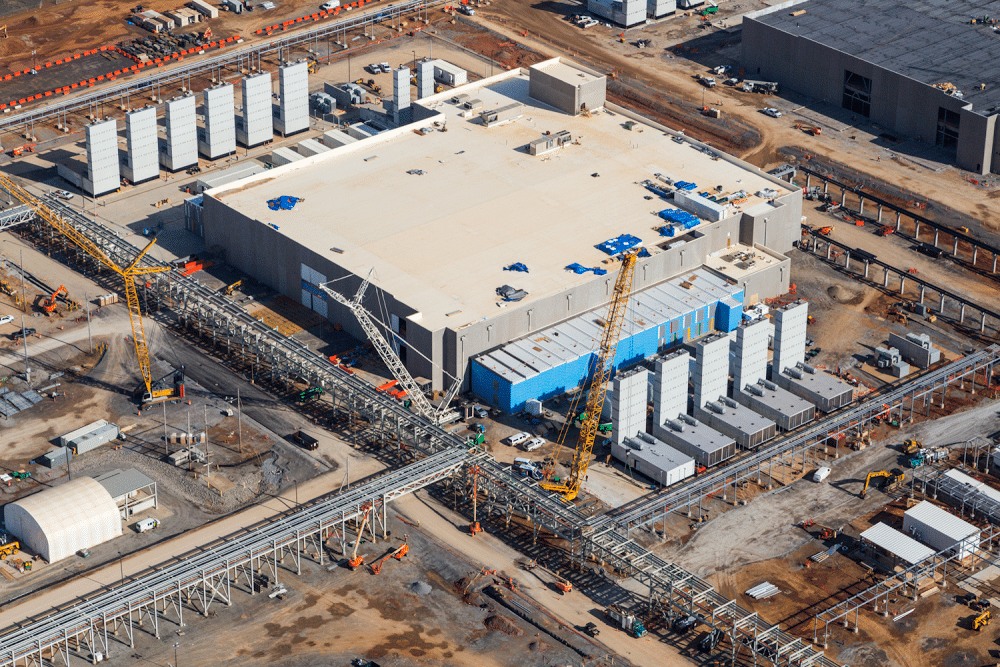






Did QuantumScape see that there is a mistake in the Growth percentages ? Going from 14 to 39 is hardly a 181% increase, rather a 281% increase. And then 39 * 6.14 = 239 and not 275. Smells like versioning gone bad…
from 14 to 39 is 179% increase
I am disappointed and frustrated by articles that fail to provide useful summaries of battery metrics.
Here are useful battery metrics:
1. Energy density per weight, in Wh/kg.
2. Energy density per volume, in Wh/L.
3. Power density per weight, in W/kg.
4. Power density per volume, in W/L.
5. Temperature range of operation, in Celsius.
6. “C” characteristics, meaning the battery’s amperage rating that it can continuously produce for 1 hour, the multiplier of that amperage rating that it can accept at maximum charge, and the multiplier of that amperage rating that it can produce at maximum discharge.
7. Number of complete charge-discharge cycles it can withstand before dropping below 80% of its original capacity.
8. Percentage of stored energy lost when not in use.
9. Cost to produce per Wh/kg.
10. Materials contents.
If the article cannot provide these metrics, the article is premature.
Excellent point. The tiny bit of energy density data QS disclosed (on their low-temp slide) was on a MUCH smaller cell than other data, did not disclose areal capacity or room temperature performance. and was a fraction of their “cell design” projections at the front of their ppt, which were design projections, not data.
Fast charge is irrelevant if the energy density isn’t there.
QS also glossed over the fact that their cells are TINY: 0.2 Ahr, and they disclose in their 8-K SEC filings (not in their ppt) that they have to make an “over 100 layer” cell. Impedance and resistance will be much higher in a multi-layer system, seriously diminishing the charge rates they’ve reported from a SINGLE layer system.
And mass of current collectors alone will make such a cell unviable in the marketplace on a Wh/kg basis.
And why do they refer to their solid state electrolyte as a “separator” but their cathode as a “catholyte”? Non-standard use of battery terminology without defining it is a red flag. If their “catholyte” is a liquid this is NOT a solid state battery.
LOADS of concerns with their data release yesterday. Would certainly not pass a journal review by an astute editor.
Thanks for this.
What JSU said.
Lots of marketing spin without much useful real world data.
Agree with the other comments. What is its operating voltage range? What is the nominal voltage of the cell. What is the terminal charge voltage? Does the cell technology scale. When we are speaking about a flat cell, the surface area has a direct impact on its operational characteristic in low and high temperature environments.(i.e. what are the operating thermal characteristics of the cell). For example, if we hit it with a 4C charge, how bad is the self heating of the cell. When we discharge at 4C, the same question. There are lots of details needed to be review your product offering. Looking forward to learning more.